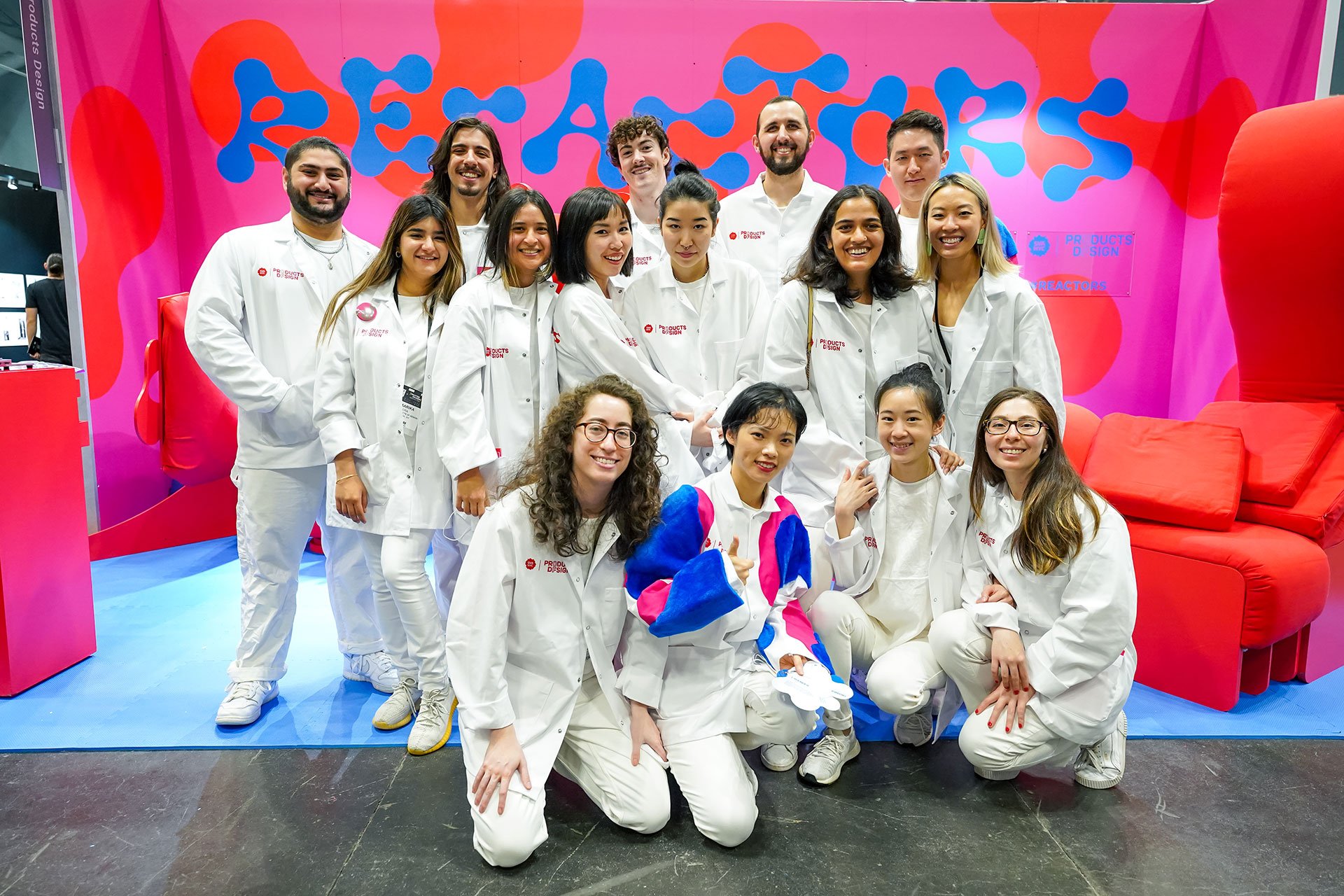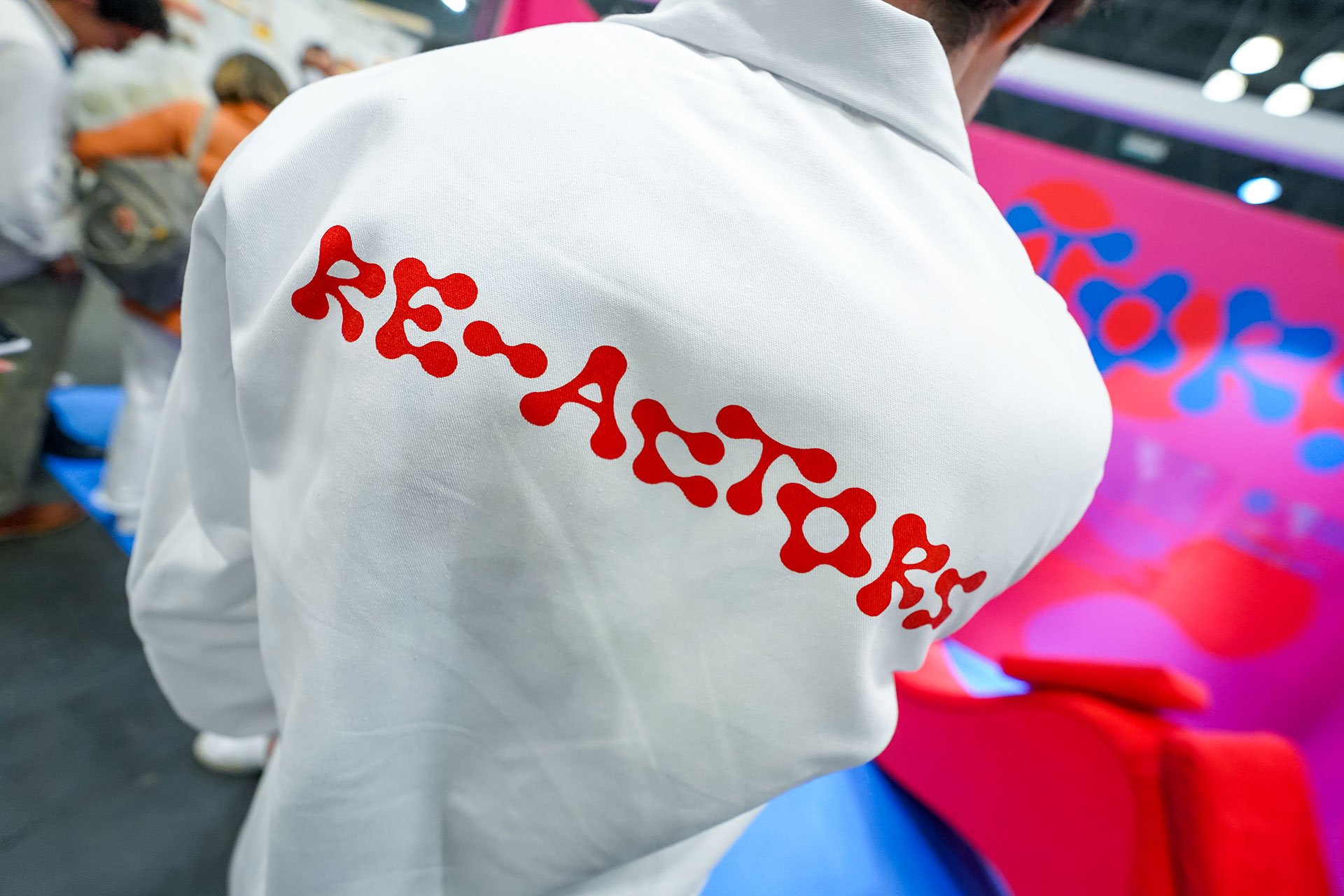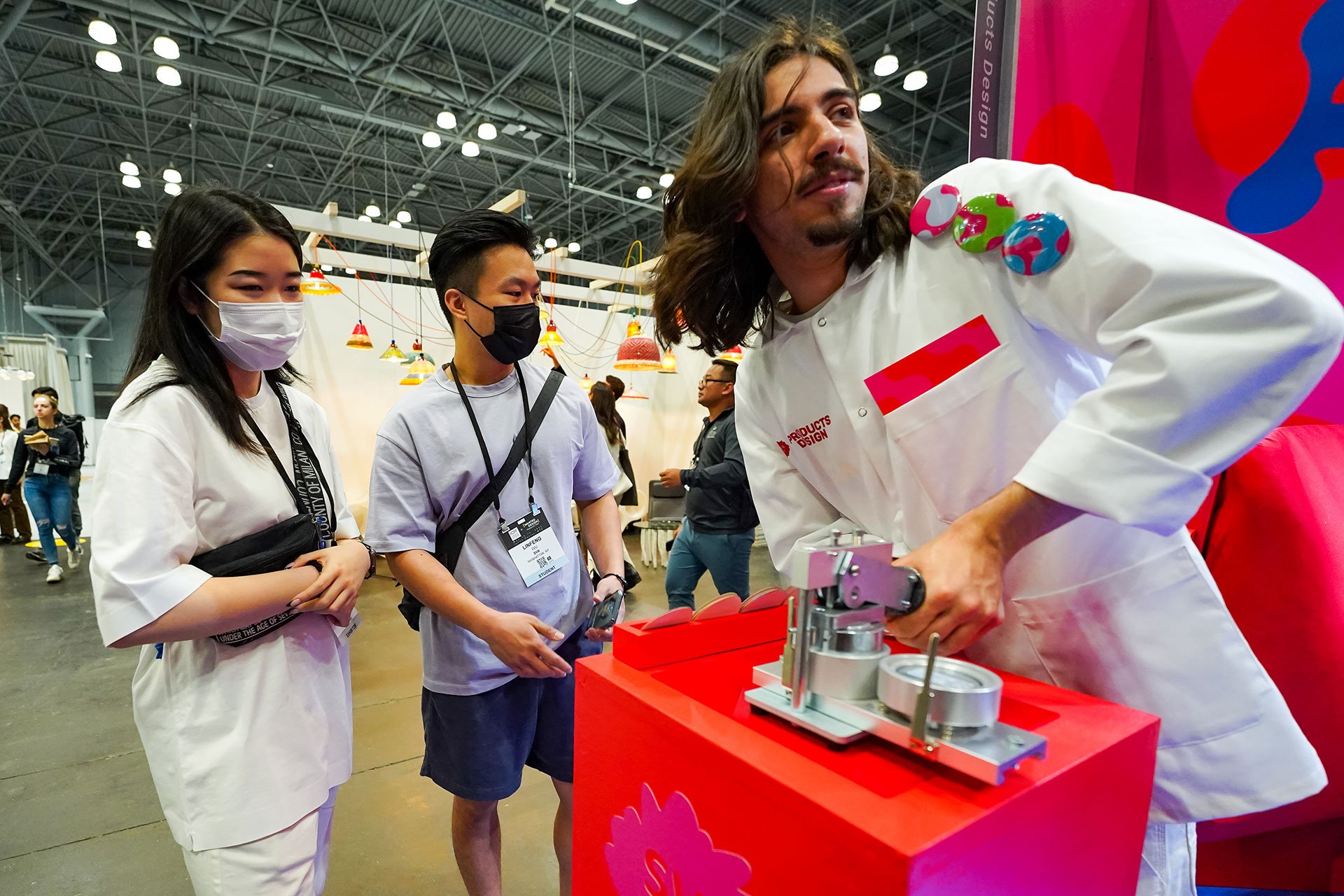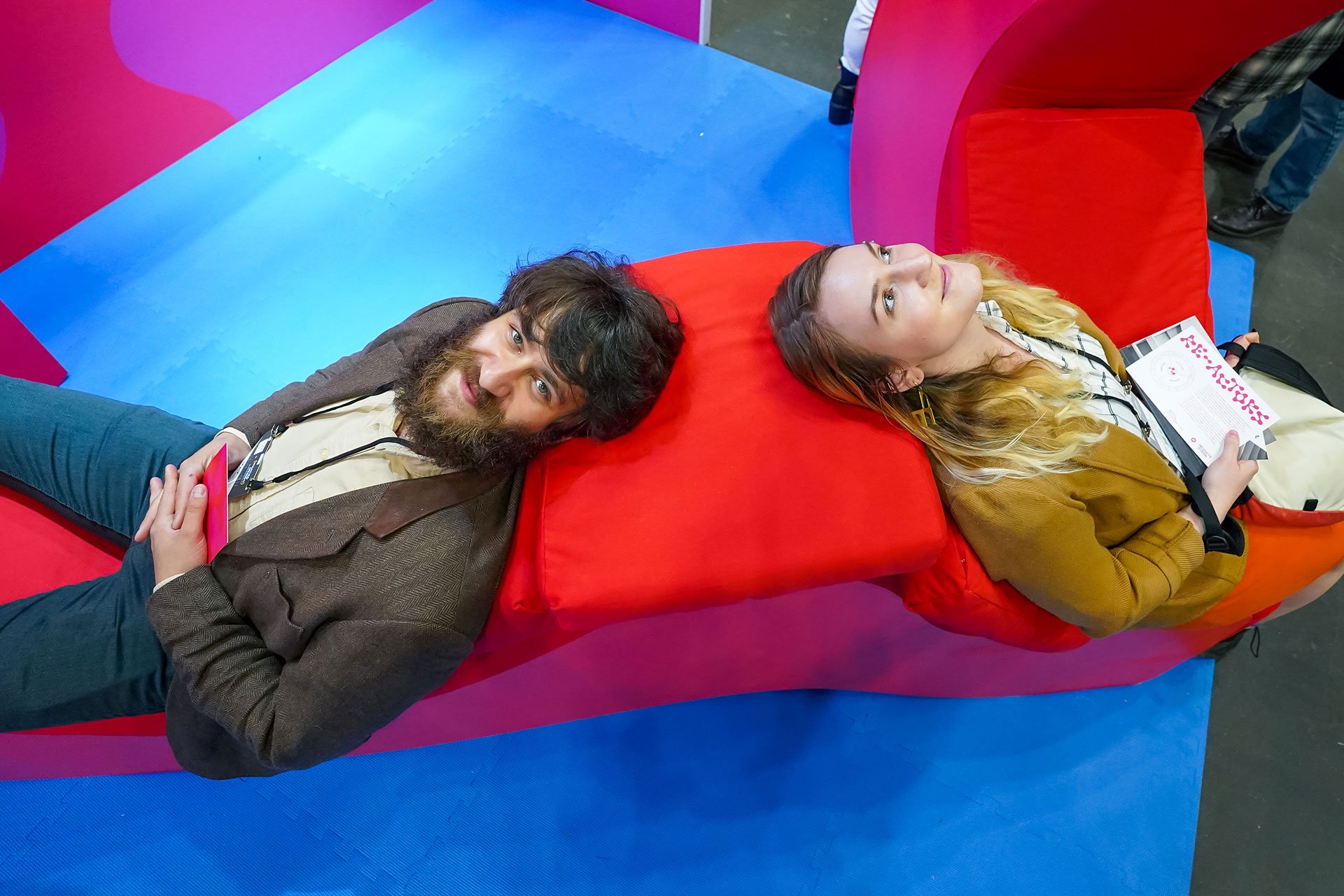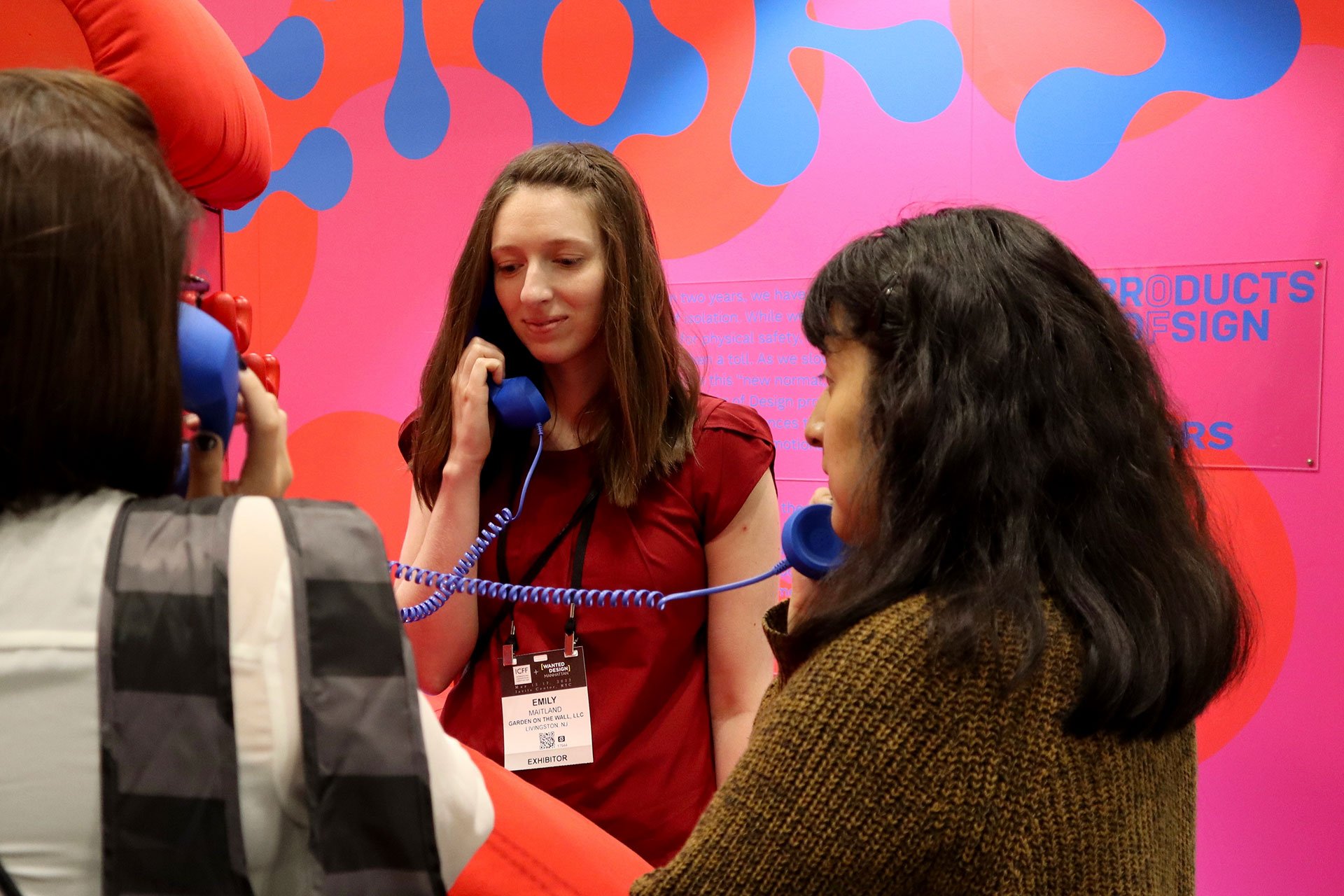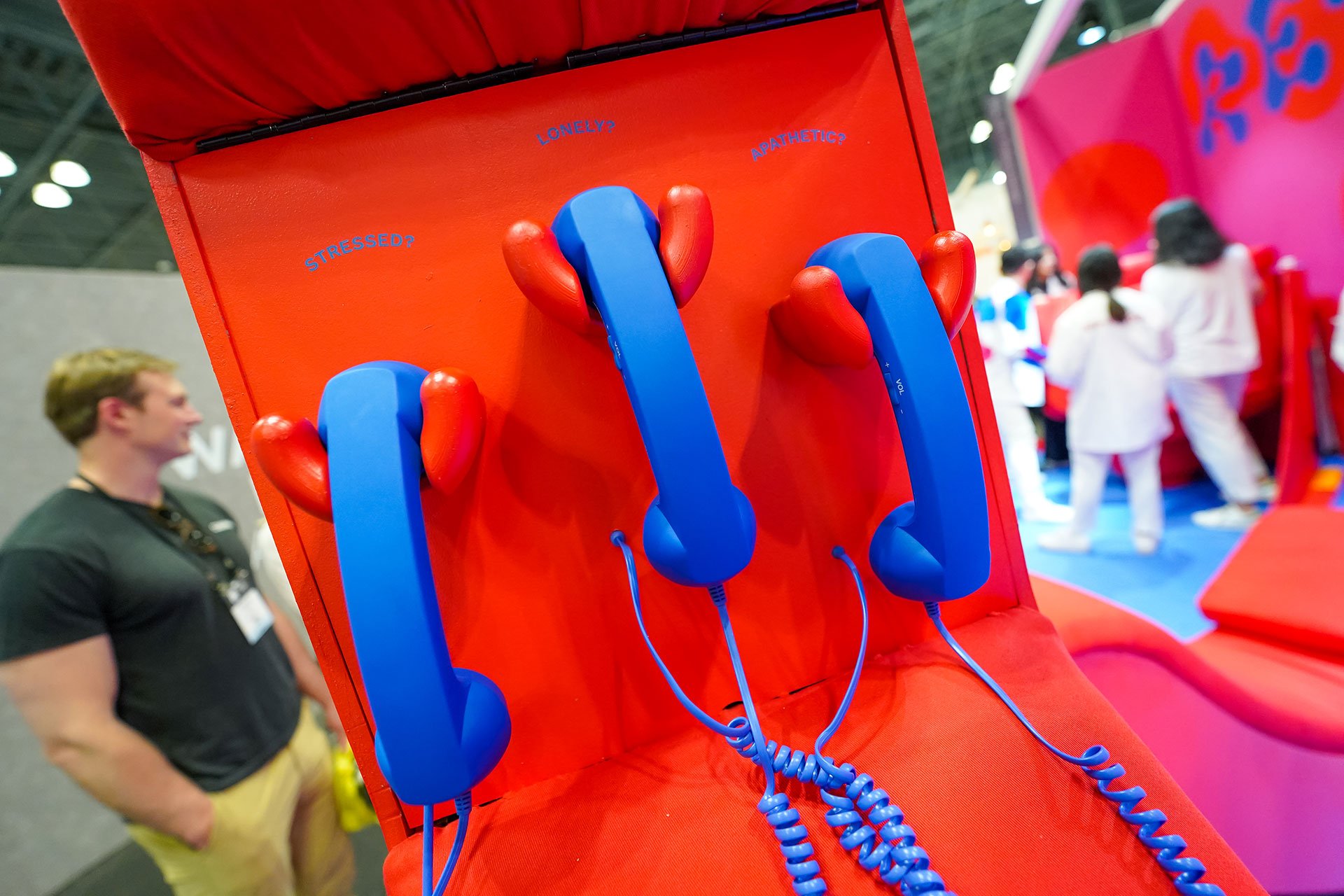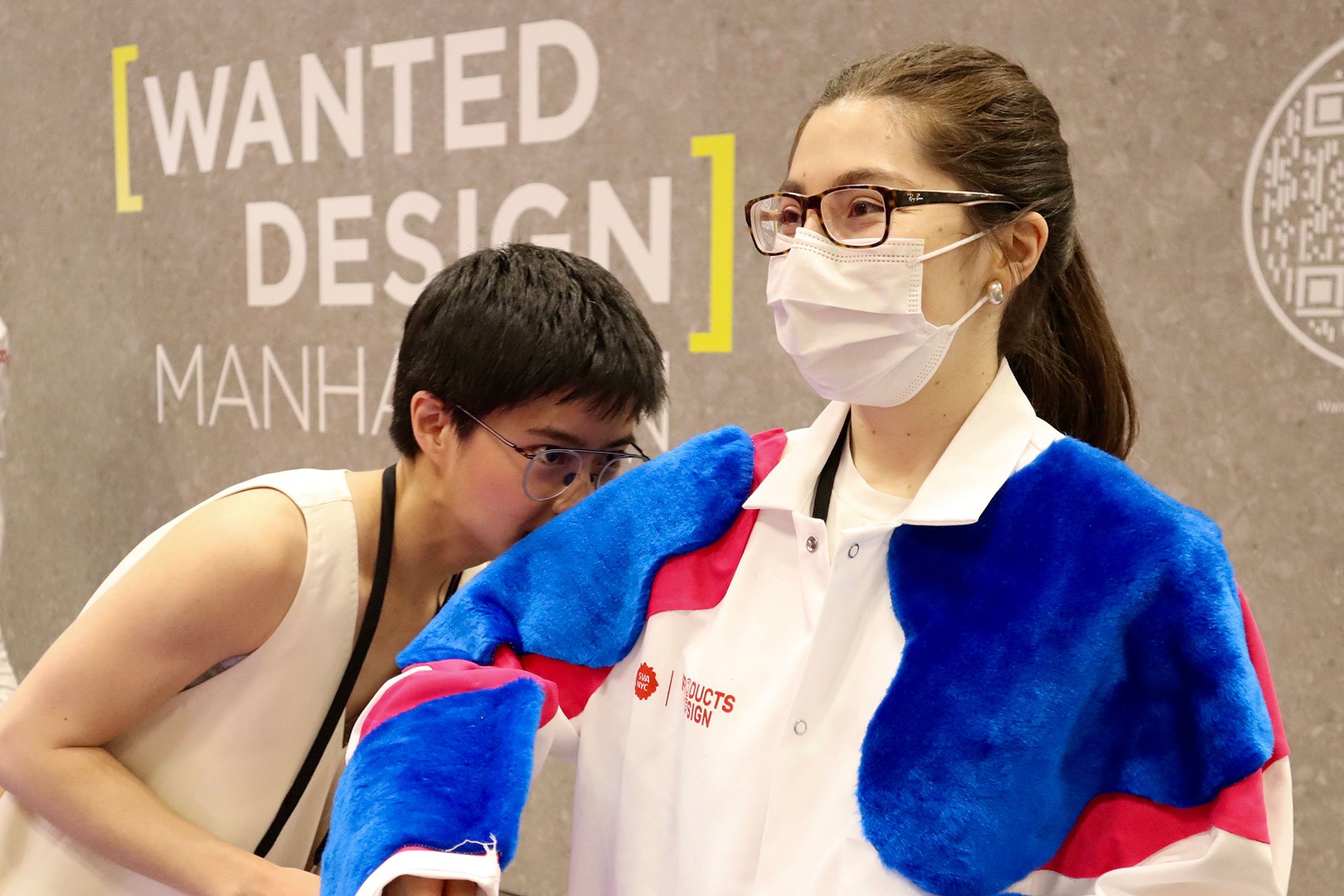"RE-ACTORS" Debuts at NYCxDESIGN Festival 2022!
At Wanted Design in New York City, the Class of 2023 debuted their semester-long group project, RE-ACTORS. Products of Design students present annually at the NYCxDESIGN Festival, and this year was unique since Wanted Design took place at the ICFF at the Jacob Javits Center!
RE-ACTORS is a series of five installations, each designed to create “re-physicalizing” and “re-socializing” experiences that trigger specific emotional reactions.
Here’s a bit more about the show:
For more than two years, we have experienced an epidemic of isolation. While we have separated and distanced for physical safety, our emotional wellbeing has taken a toll. As we slowly emerge together again into this “new normal,” students of the SVA MFA Products of Design program present Re-Actors, a suite of experiences that explores how to safely stimulate positive emotional experiences through physical interactions. Over 100 neurotransmitters in the human body influence the nervous system. Three in particular impact our sense of connectedness and wellbeing: dopamine, serotonin, and oxytocin. Re-Actors plays with physical behaviors and time in an effort to trigger these ‘happy hormones’. The exhibition demonstrates the power of design to affect us on the deepest human and chemical levels.
The annual exhibition is a result of the Design Performance class—a second-semester course taught by Sinclair Smith that draws from a long history of storytelling and performance techniques, and explores new possibilities for communicating innovative design work. Check out the gallery of highlights below, followed by descriptions of each of the five installations.
“Experiencing the RE:ACTORS exhibit at ICFF by SVA Products of Design was the most fun I had at this event, ever. It actually felt more like a theatrical laboratory than stand-along furniture on display. From a chair that comforts you with automated hugs to telephones with ASMR messages on the other line with the intention of easing your anxiety, it was all so disarming. By the end, I forgot I was at furniture fair.”
—Joey Zeledón
Eye2Eye
Eye2Eye is a standing experience where two guests gaze into each other’s eyes. The trojan horse of the intervention is the activity of “matching the eye color” of the other participant by turning a color wheel attached to the apparatus. But the true objective is the actual gazing at one another for an extended period of time. Visitors leave the experience with a pin that represents their own eye color.
The Science: 20 seconds of extended eye contact begins the release of oxytocin, triggering feelings of calm, being loved, and being cared for.
Hugg
Hugg is a standing experience where one guest is embraced by two hosts. Re-creating the “hug” brings back lost sensations from pre-pandemic when “hugs happened all the time”—here with less deliberation and risk calculus. The guest is first embraced/touched, and then, employing inflating pumps, pressure is gradually applied as air fills the hidden bladders. Guests report when they’ve had enough…or want more hugging!
The Science: A long hug can trigger the release of oxytocin. Deep pressure stimulation releases mood-boosting chemicals such as serotonin, and can reduce stress hormones such as cortisol.
Lean
The pandemic created a heightened aversion to physical touch. This intervention structures visitors’ bodies into postures where physical contact with strangers feels safe and predictable.
The Science: At first, close physical contact may increase stress hormones, but once comfortable, mood-boosting chemicals such as serotonin and oxytocin will be released.
Telephone
Guided meditations and ASMR have been proven to increase calm, reduce anxiety, and promote mindfulness. In this intervention, guests recline against a contoured surface while listening to a pre-recorded loop of affirmations. The activity aims to counteract negative thoughts and self-sabotaging behavior.
The Science: Hearing positive affirmations can improve brain function, activate motivation centers, and regulate stress.
Scratch & Sniff
Reduced activities outside the home during the pandemic restricted the breadth of stimuli entering our bodies through our senses. This intervention focuses on the sense of smell—offering visitors the chance to sniff different scent patches and guess the source.
The Science: Olfactory stimuli trigger different emotions. Natural scents release chemicals such as serotonin and endorphins—causing feelings of relaxation, and “food smells” trigger nostalgia, activating the reward systems in our brains and triggering the release of dopamine.



